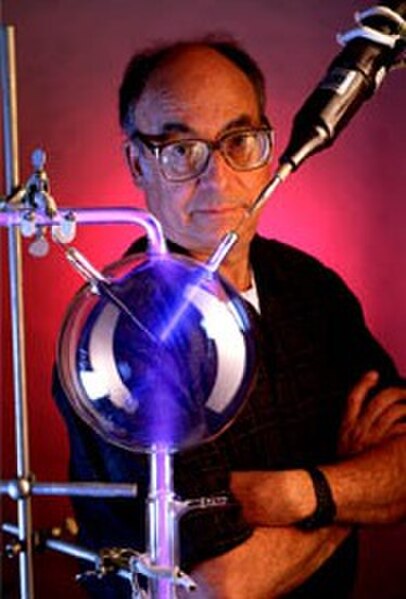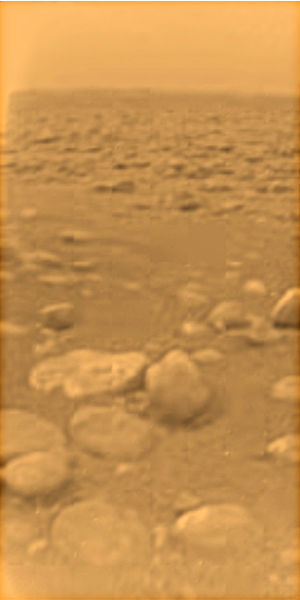The Miller–Urey experiment (or Miller experiment) was an experiment in chemical synthesis carried out in 1952 that simulated the conditions thought at the time to be present in the atmosphere of the early, prebiotic Earth. It is seen as one of the first successful experiments demonstrating the synthesis of organic compounds from inorganic constituents in an origin of life scenario. The experiment used methane (CH4), ammonia
(NH3), hydrogen (H2), in ratio 2:2:1, and water (H2O). Applying an electric arc (the latter simulating lightning) resulted in the production of amino acids.
Portrait photograph of Alexander Oparin
Stanley Miller in 1999, posed with an apparatus like that used in the original experiment
The surface of Titan as viewed from the Huygens lander. Tholins, complex particles formed by UV irradiation on the N2 and CH4 atmosphere, are likely the source of the reddish haze.
Conceptual figure from Wogan et al. (2023) depicting three stages phases of atmospheric chemistry after a large asteroid impact on the Hadean Earth. In phase 1, the impactor vaporizes the ocean, and H2 is generated after iron delivered by the impactor reacts with hot steam. In phase 2, H2 reacts with CO2 to produce CH4 while the atmosphere cools for thousands of years and steam condenses to an ocean. Phase 3 represents the Miller-Urey atmosphere that persists for millions of years, where N
The prebiotic atmosphere is the second atmosphere present on Earth before today's biotic, oxygen-rich third atmosphere, and after the first atmosphere of Earth's formation. The formation of the Earth, roughly 4.5 billion years ago, involved multiple collisions and coalescence of planetary embryos. This was followed by a <100 million year period on Earth where a magma ocean was present, the atmosphere was mainly steam, and surface temperatures reached up to 8,000 K (14,000 °F). Earth's surface then cooled and the atmosphere stabilized, establishing the prebiotic atmosphere. The environmental conditions during this time period were quite different from today: the Sun was ~30% dimmer overall yet brighter at ultraviolet and x-ray wavelengths, there was a liquid ocean, it is unknown if there were continents but oceanic islands were likely, Earth's interior chemistry was different, and there was a larger flux of impactors hitting Earth's surface.

The pale orange dot, an artist's impression of the early Earth which is believed to have appeared orange through its hazy methane rich prebiotic second atmosphere, being somewhat comparable to Titan's atmosphere





